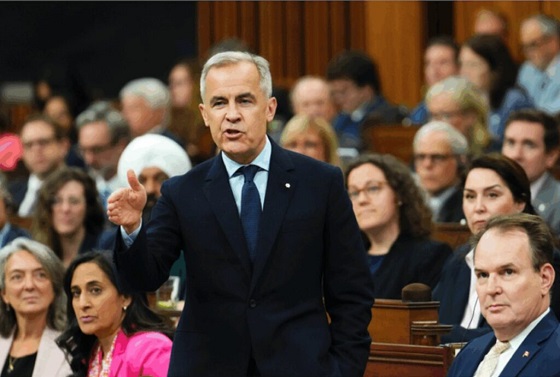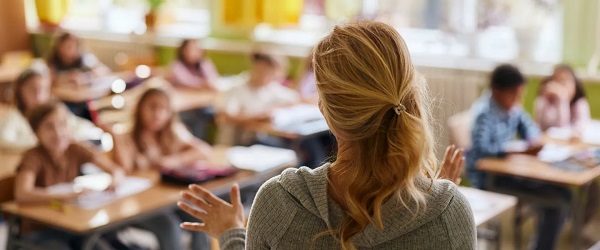Business
A tale of two countries – Drill, Baby, Drill vs Cap, Baby, Cap

From EnergyNow.ca
By Deidra Garyk
Analysis of the U.S. Election and the Canadian Oil and Gas Emissions Cap
Monday, November 4, the Canadian federal government announced the long-awaited draft emissions cap for the oil and gas industry.
The next day, the world’s largest economy held an election that resulted in a decisive victory for the position of 47th President of the USA.
With the GOP (Republicans) taking a commanding lead with 53 out of 100 possible Senate seats, and two more still to be confirmed, they have a majority that can help move along their plans for at least the next two years. Rumoured expectations are that they’ll take the House too, which will further solidify President-elect Trump’s mandate.
As part of Trump’s campaign platform, Agenda47, he promised “to bring Americans the lowest-cost energy and electricity on Earth.” The agenda pledged that “to keep pace with the world economy that depends on fossil fuels for more than 80% of its energy, President Trump will DRILL, BABY, DRILL.”
The platform also states that under his leadership, the US will once again leave the Paris Climate Accords, and he will oppose all Green New Deal policies that impact energy development. He also plans to roll back the Biden administration’s EV mandates and emissions targets, while advocating for low emissions nuclear energy.
It isn’t a guarantee that he will do anything that he says; however, if the past is any indication, we can expect Trump to follow through on his energy and climate promises.
Even though Canada and the USA are on a contiguous land mass, they could not be farther apart in energy and climate ideology.
On the northern side of the border, a day before, Canada’s green avengers of the Liberal cabinet congregated for a press conference to jubilantly announce their emissions cap, which has been studied and determined to be a defacto production cap. CAP, BABY, CAP!
Claims that the new rules go after pollution, not production, should be met with scepticism. If pollution is the problem, there would be blanket emissions caps on all heavy emitting industries and imported oil and gas would be subject to the same requirements, but it is not. I’m not sure how else to read it other than a willful slight with a sledgehammer against the Canadian oil and gas industry.
Especially since Natural Resources Minister Jonathan Wilkinson said that this is a backstop to ensure the Pathways Alliance does what they say they will. I wonder if the Pathways folks feel like they have a giant target on their backs… and fronts?
The hour-long press conference was a lesson in how to deceive with a straight face. Most of the Liberals’ claims have either been discredited or are unsubstantiated as to be meaningless.
Wilkinson, a Rhodes Scholar, calls this cap an “economic opportunity” because he believes that for Canadian oil and gas, climate change is a competitive issue, for both combusted and non-combusted products. Square that circle when no other country on the planet has an emissions cap on its oil and gas industry.
Nonetheless, the Liberals expect production to increase, which is counter to what they say out of the other side of their mouths – that oil and gas demand will peak this year, and we are not going to be using it much longer so we should just shut it all down.
Wilkinson excitedly announced the need for thousands and thousands of workers to build the decarbonization infrastructure of the new energy future. However, the Department of Environment’s Cost-Benefit Analysis Summary contradicts this claim, citing thousands of job losses.
The Study also identifies that the costs from the plan will be borne by Canadians. The Conference Board of Canada expressed similar concerns, but they were dismissed by the politicians on stage.
Edmonton MP and Minister of Employment, Workforce Development, and Official Languages Randy Boissonnault, also known as “The Other Randy” for his ethical mis-steps, put on one of the best shows of the press conference. He speaks so convincingly that you almost believe him. Almost.
He claimed that when he was campaigning last election during the Covid pandemic, the number one topic at the doors was climate change. Edmontonians wanted to talk about climate change over the global pandemic that was disrupting their lives? Yeah, right.
The Other Randy praised Ministers Guilbeault and Wilkinson for working with industry on the regulations and promised that Canadian workers will be part of the consultation and final rules. Forgive me for being sceptical.
The Spiderman-like Steven Guilbeault, Minister of Environment and Climate Change, said that oil companies have seen record profits, going from $6.6 billion pre-pandemic to $66 billion post-pandemic, and the Liberals want that extra money used on projects they approve of, namely ones that are climate-related.
Guilbault believes this cap is necessary for prosperity and energy security, along with being good for workers and “for good union jobs”. It’s not often talked about, but within the feds’ climate plans is a push for unionizing jobs. It was top-of-mind for the Deputy Minister of Labour when I was part of a delegation to Ottawa last year. She was most interested in learning about how many oil and gas jobs are unionized and showed visible displeasure at finding out that most are not.
The press conference seemed to be more of a one-sided political bun fight, with a disproportionate amount of time spent talking smack about Pierre Poilievre, Premier Danielle Smith, and Premier Scott Moe. Perhaps demonstrating the Liberals’ trepidation about the future since the final regulations will come out late next year and go into effect January 1, 2026, when it’s likely they will be out of office.
With the climate zealots out of power, enforcement may be a challenge. What if companies don’t meet the arbitrary targets and deadlines imposed by the rules? What if companies don’t buy the required credits? A reporter asked, but Guilbeault didn’t give an answer in his response. I guess we will have to wait to see what changes are made to the Canadian Environmental Protection Act (CEPA), the enforcement regulations.
Wilkinson said climate change is a “collective action problem” that must be addressed as it is the “existential threat to the human race.” This gives you a sense of how they see things – there is a problem and government is the solution.
Meanwhile, energy policy is a “Day 1 priority” for Trump. As a businessperson, he understands that demand is growing, and limited regulations are the way to develop all forms of energy.
Even if industry can meet the emissions reduction targets – there are a variety of opinions on the proposed rules – it does not mean the regulations should be implemented. Canada’s real per capita GDP is 73 per cent of America’s, so as Canada goes hard on emissions reduction regulations, if investment moves south, that number is not going to improve. Don’t let them tell you otherwise.
Deidra Garyk is the Founder and President of Equipois:ability Advisory, a consulting firm specializing in sustainability solutions. Over 20 years in the Canadian energy sector, Deidra held key roles, where she focused on a broad range of initiatives, from sustainability reporting to fostering collaboration among industry stakeholders through her work in joint venture contracts.
Outside of her professional commitments, Deidra is an energy advocate and a recognized thought leader. She is passionate about promoting balanced, fact-based discussions on energy policy and sustainability. Through her research, writing, and public speaking, Deidra seeks to advance a more informed and pragmatic dialogue on the future of energy.
Business
Major tax changes in 2026: Report

The Canadian Taxpayers Federation released its annual New Year’s Tax Changes report today to highlight the major tax changes in 2026.
“There’s some good news and bad news for taxpayers in 2026,” said Franco Terrazzano, CTF Federal Director. “The federal government cut income taxes, but it’s hiking payroll taxes. The government cancelled the consumer carbon tax, but it’s hammering Canadian businesses with a higher industrial carbon tax.”
Payroll taxes: The federal government is raising the maximum mandatory Canada Pension Plan and Employment Insurance contributions in 2026. These payroll tax increases will cost a worker up to an additional $262 next year.
For workers making $85,000 or more, federal payroll taxes (CPP and EI tax) will cost $5,770 in 2026. Their employers will also be forced to pay $6,219.
Income tax: The federal government cut the lowest income tax rate from 15 to 14 per cent. This will save the average taxpayer $190 in 2026, according to the Parliamentary Budget Officer.
Carbon taxes: The government cancelled its consumer carbon tax effective April 1, 2025. However, the government still charges carbon taxes through its industrial carbon tax and a hidden carbon tax embedded in fuel regulations.
The industrial carbon tax will increase to $110 per tonne in 2026. While the government hasn’t provided further details on how much the industrial carbon tax will cost Canadians, 70 per cent of Canadians believe businesses pass on most or some of the cost of the tax to consumers, according to a Leger poll.
Alcohol taxes: Federal alcohol taxes are expected to increase by two per cent on April 1, 2026. This alcohol tax hike will cost taxpayers about $41 million in 2026-27, according to industry estimates.
First passed in the 2017 federal budget, the alcohol escalator tax automatically increases excise taxes on beer, wine and spirits every year without a vote in Parliament. Since being imposed, the alcohol escalator tax has cost taxpayers about $1.6 billion, according to industry estimates.
“Canadians pay too much tax because the government wastes too much money,” Terrazzano said. “Canadians are overtaxed and need serious tax cuts to help make life more affordable and our economy more competitive.
“Prime Minister Mark Carney needs to significantly cut spending, provide major tax relief and scrap all carbon taxes.”
You can read the CTF’s New Year’s Tax Changes report here.
Business
Inflation Reduction Act, Green New Deal Causing America’s Energy Crisis


From the Daily Caller News Foundation
By Greg Blackie
Our country is facing an energy crisis. No, not because of new demand from data centers or AI. Instead, it’s because utilities in nearly every state, due to government imposed “renewable” mandates, self-imposed mandates, and the supercharging of the Green New Scam under the so-called “Inflation Reduction Act,” have been shutting down vital coal resources and building out almost exclusively intermittent and costly resources like solar, wind, and battery storage.
President Donald Trump understands this, and that is why on day one of his administration he declared an Energy Emergency. Then, a few months later, the President signed a trio of Executive Orders designed to keep our “beautiful, clean coal” burning and providing the reliable, baseload, and affordable electricity Americans have benefitted from for generations.
Those orders have been used to keep coal generation online that was slated to shut down in Michigan and will potentially keep two units operating that were scheduled to shut down in Colorado this December. In Arizona, however, the Cholla Power Plant in Navajo County was shuttered by the utility just weeks after Trump explicitly called out the plant for saving in a press conference.
Dear Readers:
As a nonprofit, we are dependent on the generosity of our readers.
Please consider making a small donation of any amount here.
Thank you!
Unlike states with green mandates, Arizona essentially has none. Instead, our utilities, like many around the country, have self-imposed commitments to go “Net Zero” by 2050. To meet that target, they have planned to shut down all coal generation in the state by 2032 and plan to build out almost exclusively solar, wind, and battery storage to meet an expected explosive growth in demand, at a cost of tens of billions of dollars. So it is no surprise that like much of the rest of the country, Arizona is facing an energy crisis.
Taking a look at our largest regulated utilities (APS, TEP, and UNS) and the largest nonprofit utility, SRP, future plans paint an alarming picture. Combined, over the next 15 years, these utilities expect to see demand increase from 19,200 MW to 28,000 MW. For reference, 1,000 MW of electricity is enough to power roughly 250,000 homes. To meet that growth in demand, however, Arizonans will only get a net increase of 989 MW of reliable generation (coal, natural gas, and nuclear) compared to 22,543 MW (or nearly 23 times as much) of intermittent solar, wind, and battery storage.
But what about all of the new natural gas coming into the state? The vast majority of it will be eaten up just to replace existing coal resources, not to bring additional affordable energy to the grid. For example, the SRP board recently voted to approve the conversion of their Springerville coal plant to natural gas by 2030, which follows an earlier vote to convert another of their coal plants, Coronado, to natural gas by 2029. This coal conversion trap leaves ratepayers with the same amount of energy as before, eating up new natural gas capacity, without the benefit of more electricity.
So, while the Arizona utilities plan to collectively build an additional 4,538 MW of natural gas capacity over the next 15 years, at the same time they will be removing -3,549 MW (all of what is left on the grid today) of coal. And there are no plans for more nuclear capacity anytime soon. Instead, to meet their voluntary climate commitments, utilities plan to saddle ratepayers with the cost and resultant blackouts of the green new scam.
It’s no surprise then that Arizona’s largest regulated utilities, APS and TEP, are seeking double digit rate hikes next year. It’s not just Arizona. Excel customers in Colorado (with a 100% clean energy commitment) and in Minnesota (also with a 100% clean energy commitment) are facing nearly double-digit rate hikes. The day before Thanksgiving, PPL customers in Rhode Island (with a state mandate of 100% renewable by 2033) found out they may see rate hikes next year. Dominion (who has a Net Zero by 2050 commitment) wanted to raise rates for customers in Virginia by 15%. Just last month, regulators approved a 9% increase. Importantly, these rate increases are to recover costs for expenses incurred years ago, meaning they are clearly to cover the costs of the energy “transition” supercharged under the Biden administration, not from increased demand from data centers and AI.
It’s the same story around the country. Electricity rates are rising. Reliability is crumbling. We know the cause. For generations, we’ve been able to provide reliable energy at an affordable cost. The only variable that has changed has been what we are choosing to build. Then, it was reliable, dispatchable power. Now, it is intermittent sources that we know cost more, and that we know cause blackouts, all to meet absurd goals of going 100% renewable – something that no utility, state, or country has been able to achieve. And we know the result when they try.
This crisis can be avoided. Trump has laid out the plan to unleash American Energy. Now, it’s time for utilities to drop their costly green new scam commitments and go back to building reliable and affordable power that generations to come will benefit from.
Greg Blackie, Deputy Director of Policy at the Arizona Free Enterprise Club. Greg graduated summa cum laude from Arizona State University with a B.S. in Political Science in 2019. He served as a policy intern with the Republican caucus at the Arizona House of Representatives and covered Arizona political campaigns for America Rising during the 2020 election cycle.
-

 Business16 hours ago
Business16 hours agoMajor tax changes in 2026: Report
-

 Digital ID6 hours ago
Digital ID6 hours agoCanada releases new digital ID app for personal documents despite privacy concerns
-

 Alberta17 hours ago
Alberta17 hours agoSchools should go back to basics to mitigate effects of AI
-

 Daily Caller16 hours ago
Daily Caller16 hours agoChinese Billionaire Tried To Build US-Born Baby Empire As Overseas Elites Turn To American Surrogates
-

 Crime2 days ago
Crime2 days agoTerror in Australia: 12 killed after gunmen open fire on Hanukkah celebration
-

 Media2 days ago
Media2 days agoReporters determined to drive their industry and its reputation into the abyss one Tweet at a time
-

 Energy5 hours ago
Energy5 hours agoCanada’s sudden rediscovery of energy ambition has been greeted with a familiar charge: hypocrisy
-

 Daily Caller16 hours ago
Daily Caller16 hours agoTwo states designate Muslim group as terrorist










